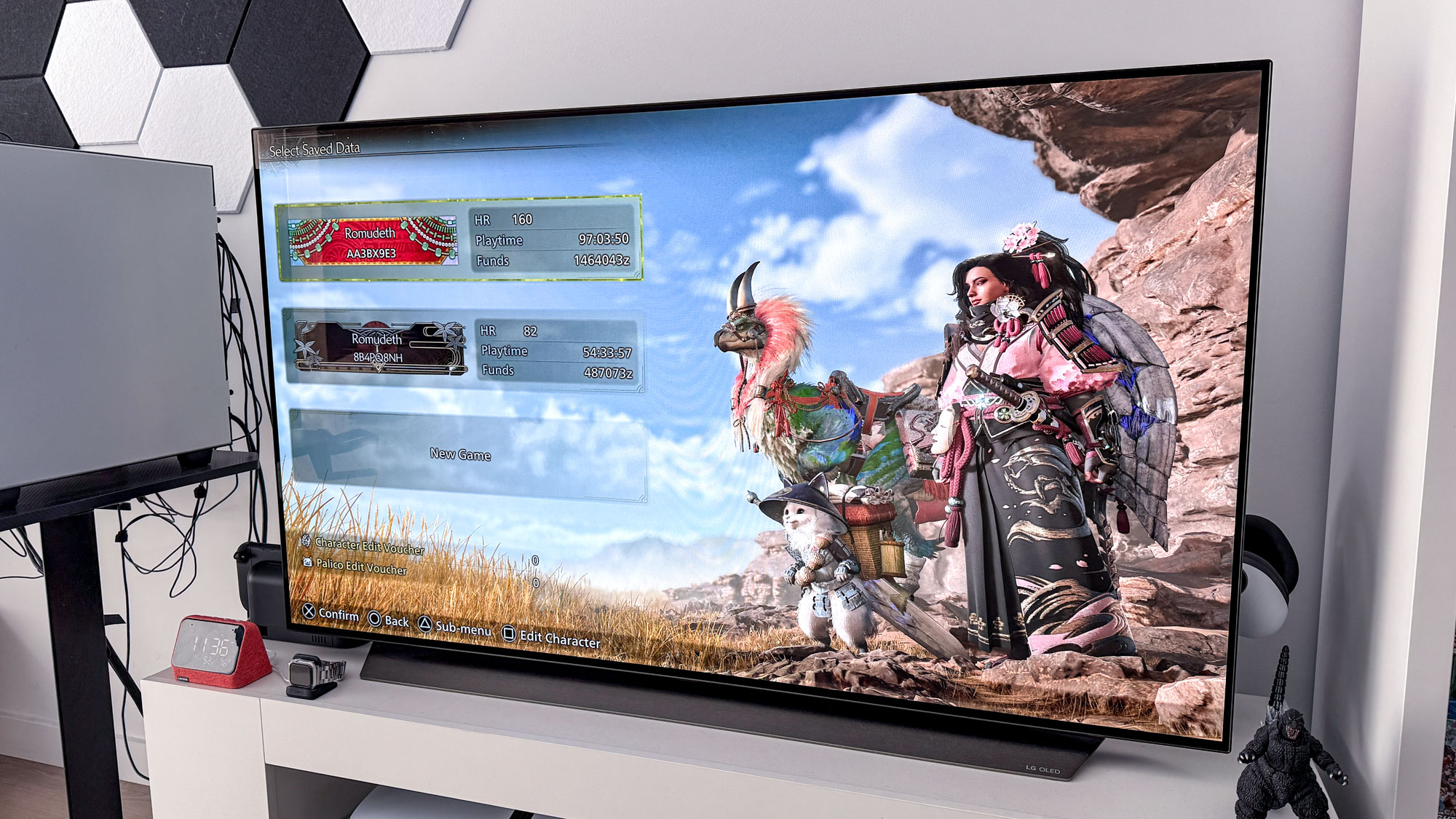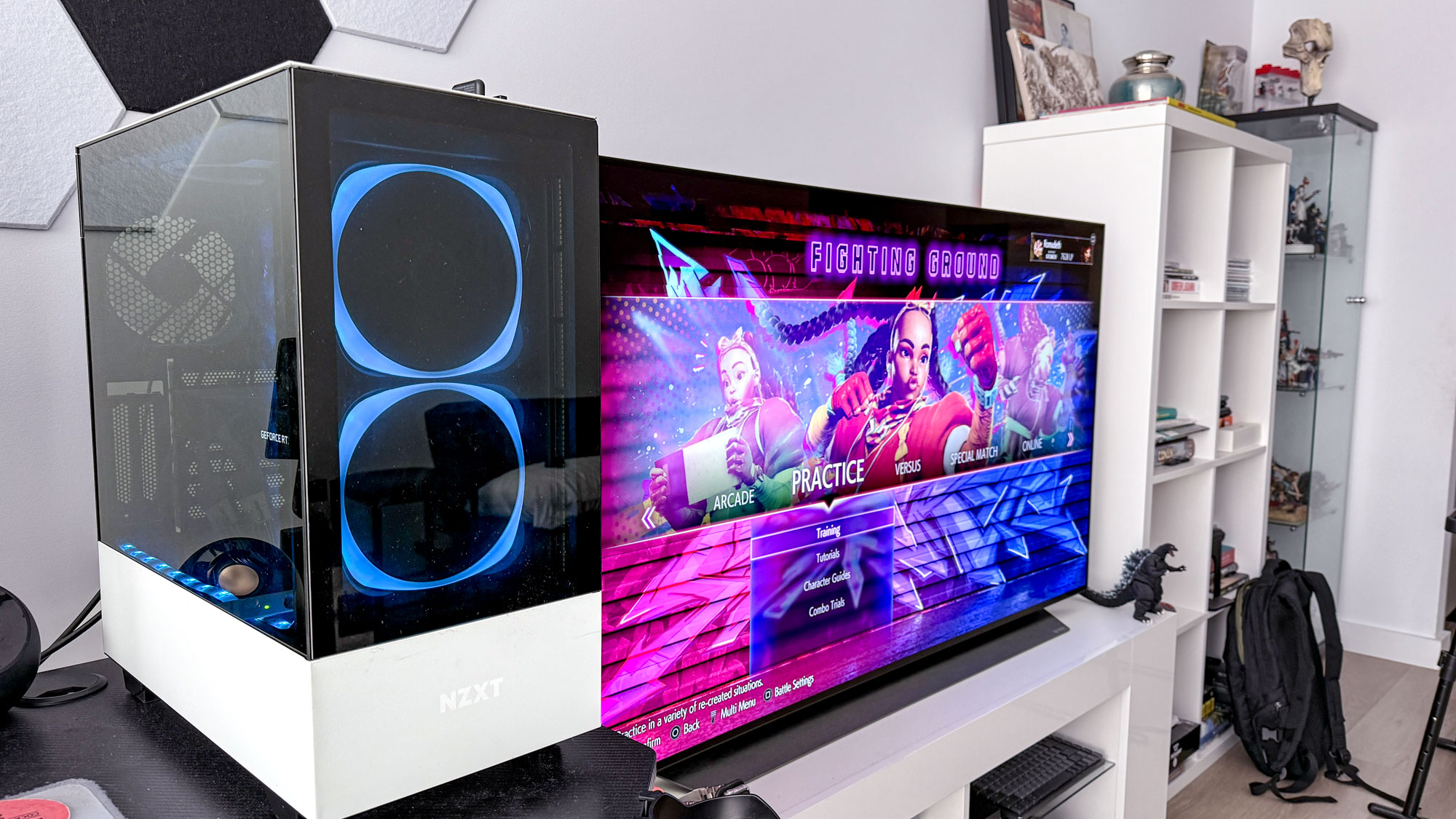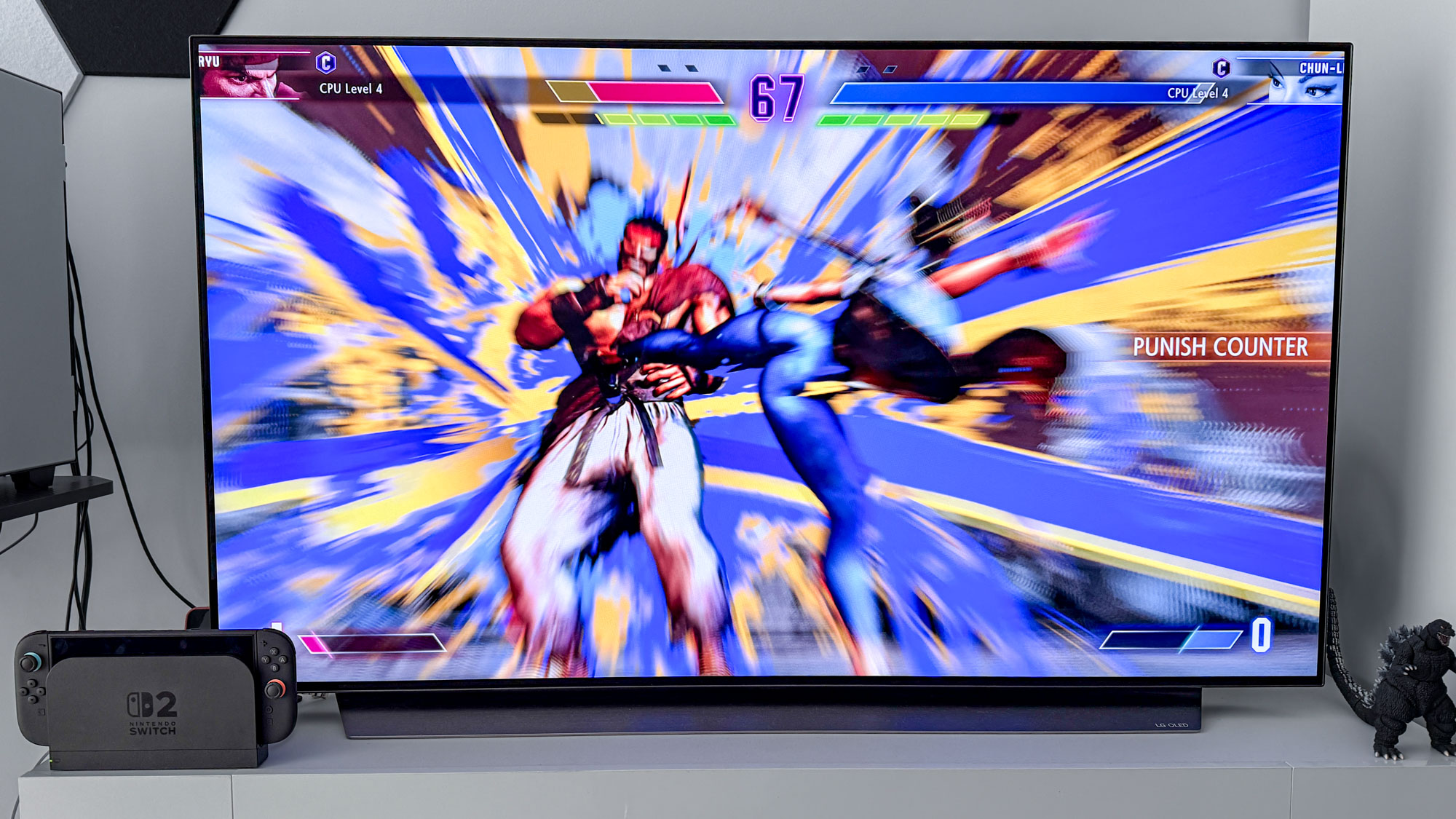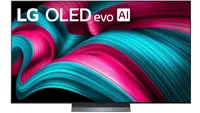I review gaming monitors, but I prefer playing games on my LG OLED TV — here's why
Gaming monitors are designed to enhance the gaming experience, but it's hard to top playing in front of a TV

I’ve been a gamer for most of my life, and I’ve almost exclusively played games on a TV. This hasn’t changed, even now that I review the best gaming monitors for a living. While these devices are specifically designed for playing games at the best possible resolution, refresh rate, and response time, I still default to playing on my current LG OLED.
That’s not to say I haven’t seriously considered switching to a gaming monitor. Devices like the Alienware AW3425DW, LG UltraGear 32GS95UE-B, and Samsung Odyssey OLED G9 have tempted me. But while those gaming monitors offer better performance and lower response times, I’m not making the leap from TV to monitors for gaming.
I currently own a 55-inch LG CX OLED TV, which I purchased back in 2020 for playing PS5 and the best PC games. Despite being outclassed by better TVs like the LG C5, this older TV still provides the bare minimum I need for gaming. This includes an OLED display, HDR10 support, 4K resolution, a 120Hz refresh rate, HDMI 2.1 support, and a 1ms response time in gaming mode. I typically get new TVs when a new gaming generation starts, so I’ll likely keep this TV until the PS6 launches.
I’m not writing this article to change anyone’s mind. If you prefer playing games on a gaming monitor, then you’re arguably getting the better overall gaming experience. However, if you’re like me and like playing games on a TV, I’m here to tell you that you’re not alone. Here’s why I prefer playing games on my LG OLED TV.
Introduced in LG's 2025 TV lineup, the new LG C5 OLED is here as the value pick of the year. Offering a slew of features, like a range of HDR certifications and gaming specs for the PS5 Pro crowd, the C5 proves a major improvement over its predecessor.
48" for $1,396
55" for $1,596
65" for $2,296
77" for $3,296
83" for $5,296
Ideal aspect ratio

Gaming monitors larger than 34 inches used to be rare, but that’s no longer true thanks to giants like the 45-inch LG UltraGear 45GX950A-B and the even larger 57-inch Samsung Odyssey Neo G9. That said, monitors like these are generally curved and ultrawide. These gaming monitors can make gaming feel more immersive and are also fantastic for productivity. However, they don’t always make for the best gaming experience.
The main issue I have with ultrawide gaming monitors is that not all games, especially console titles, support ultrawide aspect ratios. PS5 games generally have a 16:9 aspect ratio, for instance. Because of that, you’ll have empty space on the sides if you’re connected to a 32:9 monitor. This is also true for the majority of video content. While playing games with an ultrawide aspect ratio can be extremely immersive, that’s only for select games with ultrawide support.
Though I purchased and primarily use my TV for gaming, I prefer its standard 16:9 aspect ratio and flat panel since it’s ideal for most games and video content. Again, ultrawide curved gaming monitors are fantastic, but they’re not the best for most of the games I play.
Get instant access to breaking news, the hottest reviews, great deals and helpful tips.
Speakers

Most of the gaming monitors I’ve tested don’t have speakers. When they do, the sound quality isn’t exactly ear-pleasing. Because of that, you’d need to use one of the best gaming headsets.
While I have a handful of headsets myself, I only use them when in a game chat session with friends. Most of the time, I'm getting sound from my TV's speakers. Yes, headsets deliver better sound quality and can be more immersive, but I don’t enjoy wearing them for longer than two hours. Since I’m not an audiophile and don’t want to wear something on my head for too long, I’m fine with my TV’s speakers. If I had a gaming monitor, I’d be forced to wear a gaming headset to get better sound, or sound at all.
And since I’m sure some of you will ask, I don’t use one of the best soundbars since I live in an apartment and don’t want to annoy my neighbors. No matter how loud I turn up my TV’s speakers, they won’t match a soundbar’s output.
The console experience

I only started playing PC games around ten years ago when I purchased my first true gaming rig. Before that, I only played on gaming consoles ranging from the original NES all the way to the PS4. Sitting in front of a TV with a controller in hand is my ideal experience, so when I began playing PC games, I made sure to replicate the console experience.
Right now, I have my gaming and work PC connected to my LG CX. When I want to play a PC game, I simply select my TV as a display option, fire up a game, and play using one of the best PC game controllers. While there are more steps involved than when I play on PS5 or Nintendo Switch 2, the actual act of playing PC games is effectively the same as the console experience.
You might wonder what I do when I want to play RTS or MMORPGs, which have control schemes generally designed for the best gaming keyboards and best gaming mice. The answer is that I don’t play those genres. Remember, I come from a console gaming background, so I didn’t grow up playing games like Command & Conquer or EverQuest. And while I appreciate mouse and keyboard controls, they still feel alien to me, even for games that are designed for them.
If I could only play PC games while at my desk, I wouldn’t be a PC gamer. I’ll explain why in a bit, but regardless, when I play games on any platform, I want to do it the way I always have — in front of my TV as if I’m playing on a console.
I’m not a competitive gamer

If you’re a competitive gamer, then you absolutely need a gaming monitor. That’s because they offer high refresh rates for smoother gameplay and lower response times to improve (or virtually eliminate) input lag. For example, monitors like the Alienware AW2524H can achieve an absurd 500Hz refresh rate and super-low 0.5ms response time. This is something unheard of for TVs.
While higher refresh rates and low response times can help some people play better, the majority of folks won’t notice an appreciable difference.
I’m not saying that playing a game on a 240Hz and 0.03ms capable monitor won’t make a difference in gaming. If you’re a professional gamer, you might be capable of discerning between 240Hz and 480Hz. That’s awesome, but I’m just a normal gamer and don’t have that ability. Because of that, I don’t need the performance a gaming monitor provides.
I don’t want to play where I work

This is the last point, but it’s actually the main reason I prefer gaming on my TV over a gaming monitor. It’s also a sentiment that many of my fellow gaming friends and colleagues also share. After spending 8+ hours a day at my desk, the last thing I want to do is remain at my desk to play video games.
I live in a studio apartment, so designating different “rooms” is important, even if they’re artificial separations. Sure, I only move a few feet to the right when going from my desk to my TV, but doing so tells my brain that it’s time to relax. If I were to stay at my desk to play games, I’d still think I was working. That might sound weird, but if you’ve ever lived in a studio apartment or small space, you’ll understand.
I sit about eight feet away from my TV, which is a good distance that allows me to comfortably see everything without straining my eyes. When working, my eyes are about an arm's length away from my monitor(s). I don’t get eye strain during a typical 8-hour work day, but my eyes definitely feel worn out when I have to work longer. I can only imagine the kind of eye strain I’d have if I also played games at my desk. There are probably things I could do to minimize this, but why do that when I can just leave my desk to play games on my TV?
I love gaming on TVs
Playing video games on a gaming monitor is arguably the best way to do so since that’s what they’re designed for. As a gaming monitor reviewer, I will always recommend these devices to serious gamers.
As much as I love testing gaming monitors and appreciate what they can provide, I’d still rather play on my LG OLED. Not only does it deliver everything I want/need when gaming, but it gets me away from my work desk so I can truly relax. I’m not saying I’ll never switch to a gaming monitor, but for now, I’m going to continue playing games the way I always have — on my TV.
More from Tom's Guide
- I test gaming monitors for a living — here's the 7 things I look for
- This stunning OLED gaming monitor is the best I tested — here's why
- I just tested this budget 32-inch 4K gaming monitor

Tony is a computing writer at Tom’s Guide covering laptops, tablets, Windows, and iOS. During his off-hours, Tony enjoys reading comic books, playing video games, reading speculative fiction novels, and spending too much time on X/Twitter. His non-nerdy pursuits involve attending Hard Rock/Heavy Metal concerts and going to NYC bars with friends and colleagues. His work has appeared in publications such as Laptop Mag, PC Mag, and various independent gaming sites.
You must confirm your public display name before commenting
Please logout and then login again, you will then be prompted to enter your display name.

